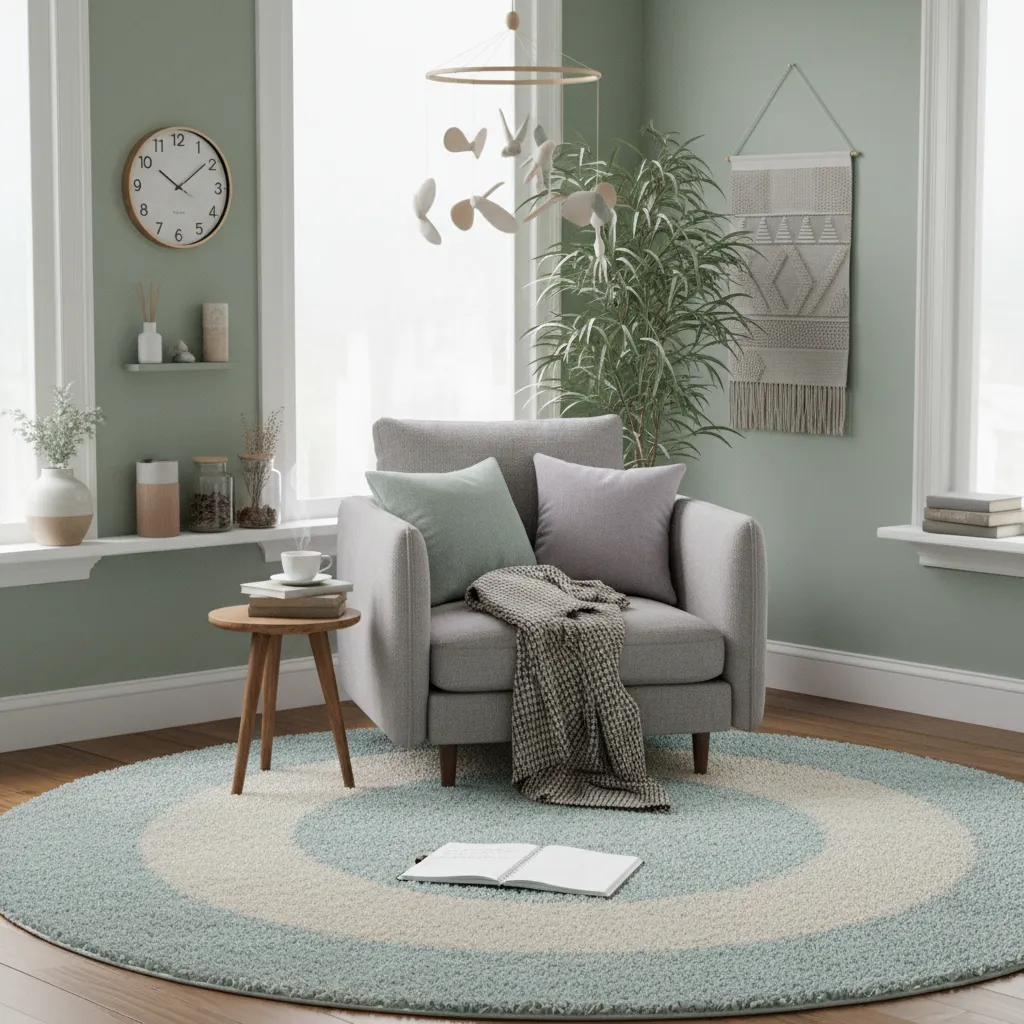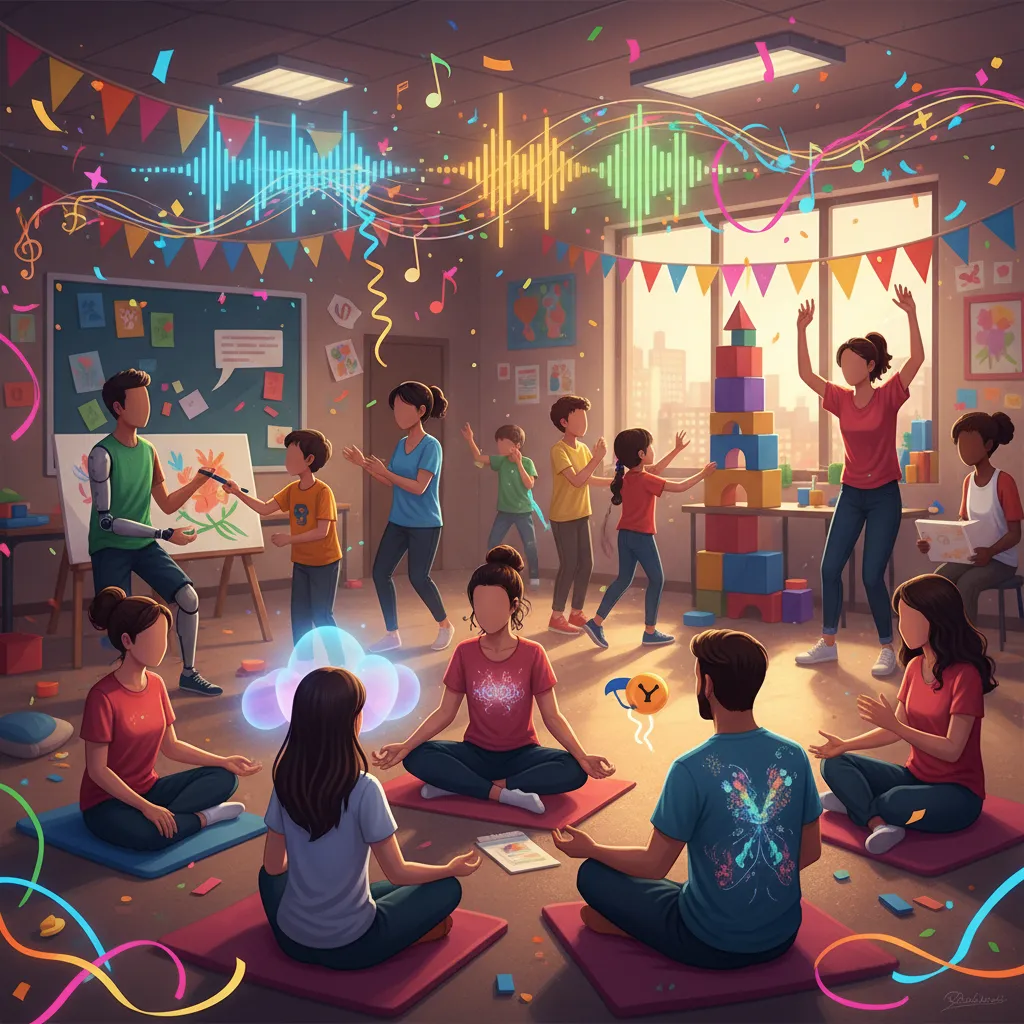Last December, I was scrambling to untangle a string of lights in my classroom when I noticed Max, one of my most imaginative students, quietly placing his headphones on and heading straight to the coatroom. Was he dodging group singing practice again? Probably. That day was a wake-up call: what looks festive to some can be downright overwhelming to others—especially for neurodivergent kids. Between classroom parties, schedule shifts, and endless noise, the holidays amplify so many challenges. So, forget the Pinterest-perfect bulletin boards for a second—let’s talk about what really works to support every learner this season.
When the holidays hit, our classrooms fill with excitement, decorations, and—let’s be honest—a lot of unpredictability. For neurodivergent students, especially those with autism or ADHD, these changes can trigger anxiety and make it harder to focus or participate. That’s why I always remind myself: it’s not about the garland. The real magic comes from calm classroom strategies, predictable routines, and sensory-friendly twists that help every student feel safe and ready to learn.
Routine shifts can be tough for neurodivergent students. The best way I’ve found to lower classroom anxiety is to keep routines as predictable as possible—even during the holiday hustle. Here’s how I do it:
‘A structured environment with clear expectations is the best gift you can give a neurodivergent student during the holidays.’ – Dr. Julia Randle
Visual schedules aren’t just for younger students—they’re essential for anyone who benefits from clear, concrete communication. I use:
These tools minimize unpredictable stressors and help everyone—neurodivergent or not—feel more in control of their day.
Holiday decorations are fun, but for some students, they can be overwhelming. That’s why I focus on sensory-friendly tools that support self-regulation and comfort:
Offering these tools in a festive way makes them feel like part of the celebration, not a spotlight on differences.
Movement breaks are a must for executive functioning and sensory integration. During the holidays, I like to add a seasonal twist:
These breaks help students self-regulate, refocus, and burn off extra energy in a positive way.
Above all, I strive to model positive behaviors and use descriptive praise. Instead of calling out what not to do, I focus on what’s going well: “I see you using your fidget quietly—great job!” This fosters a non-judgmental atmosphere where every student feels valued and understood.
By blending calm classroom strategies, visual schedules, sensory-friendly tools, and movement breaks, we can support neurodivergent students—and truly everyone—during the holiday hustle. It’s not about the garland. It’s about giving every child the structure and support they need to shine.

Let’s be honest: the holiday season in schools can feel like a snow globe that’s been shaken a little too hard. For neurodivergent students—especially those with autism or ADHD—this time of year can bring extra challenges. There’s excitement, but also anxiety, sensory overload, and unpredictable changes. As teachers, we can offer the gift of voice: empowering students to express their feelings, regulate emotions, and choose how they participate in the festive whirlwind. Here’s how we can build a truly inclusive learning environment that celebrates every student’s needs, with a dash of joyful chaos.
One of my favorite classroom tools during the holidays is the humble feelings chart. Whether it’s a “Grinch meter” for those not feeling the holiday spirit, or a simple row of emoji faces, these visual cues give students a safe, concrete way to share how they’re doing. I keep a laminated chart near our classroom door and encourage everyone—myself included—to check in at the start of the day. This simple act normalizes emotional expression and helps me spot students who might need extra support.
Research shows that visual and emotional regulation aids like these foster empathy and understanding—not just for neurodivergent students, but for the whole class. When students see that it’s okay to feel “Grinchy” or overwhelmed, we create a more supportive environment for everyone.
Holiday activities like singalongs, class parties, or group performances can be overwhelming—even for students who usually love the spotlight. That’s why I always offer flexible participation options. Students can choose how (or if) they want to join in. Maybe they’d rather help set up chairs for the concert than sing on stage, or maybe they need a quiet corner with a book during the class party. The key is making these options visible and accessible.
‘When we offer students options for engagement, we offer them dignity.’ – Dr. Riley Bennett
Flexible participation isn’t just about reducing anxiety; it’s about fostering a sense of agency and belonging. When students know they have choices, they’re more likely to engage in ways that feel safe and meaningful. And yes, sometimes this means embracing a little joyful chaos—letting students dance in the back of the room, color quietly, or even lead their own mini-holiday project.
Another powerful tool for emotional regulation is the use of storybooks and activities that center on real-life holiday stressors. I love reading stories about characters who feel anxious about big events, or who need a break from the noise. Afterward, we talk about what the characters felt and brainstorm strategies together. Sometimes, I invite students to create their own “holiday survival” storybooks or comics—giving them a voice and helping peers understand different perspectives.
By weaving emotional regulation and flexible participation into our holiday routines, we create a classroom where every student feels seen, heard, and valued. And in the midst of the tinsel and the noise, that’s the real magic of the season.

Let’s be honest: the holidays can turn even the calmest classroom into a whirlwind of noise, excitement, and unpredictability. For neurodivergent students—especially those with autism or ADHD—this “holiday hustle” can quickly become overwhelming. That’s why building a supportive environment isn’t just a nice-to-have; it’s essential. One of the most powerful calm classroom strategies I’ve found is creating a true safe harbor: a sensory-friendly classroom retreat where students can decompress, recharge, and just breathe.
Imagine a cozy corner tucked away from the main action. Maybe you call it the “North Pole Nook” or the “Snow Globe Space” to keep things festive, or maybe you keep it simple and soothing. The key is that it’s always available, no questions asked. Stock it with soft lighting, comfy seating, and sensory tools—think fidget toys, weighted lap pads, or even noise-canceling headphones. This isn’t just a cute classroom management trick; research shows that sensory-friendly quiet spaces offer crucial relief for students experiencing overwhelm, helping them return to learning when they’re ready.
I’ve seen firsthand how a dedicated quiet retreat can transform the classroom climate. Students who might otherwise shut down or act out during the chaos of holiday activities have a place to go—a lifeline, as one of my colleagues, Sarah Kim, put it:
‘A quiet corner is a lifeline during the holidays—sometimes we all need a place to just be.’ – Sarah Kim
But creating a safe harbor isn’t just about physical space. It’s about the vibe. During the holidays, I make a conscious effort to model non-judgmental, descriptive praise. Instead of calling out what students are doing “wrong,” I focus on what’s working: “I see you’re taking a break to help yourself feel better. That’s a smart choice.” This kind of positive modeling sets the tone for the whole class, showing that self-care is not only accepted, but respected. It’s a subtle shift in classroom management, but it makes a world of difference—especially for students with heightened anxiety or social burnout.
Another piece of the puzzle is making sure that students don’t feel singled out for needing a break. I let everyone know that the quiet space is open to anyone, anytime. No one has to “earn” it, and there’s no stigma attached. This helps foster a truly inclusive, supportive environment where differences are normalized and respected. I also encourage peer support, especially during the holidays. Secret holiday study groups, compassion-building circles, or simple acts of kindness can go a long way toward building community and engagement. These aren’t just seasonal extras—they’re foundational to a classroom culture where everyone feels safe and seen.
Visual and emotional regulation aids can also help students navigate the ups and downs of the season. Feelings charts, emotion storybooks, and check-in routines give students the language and permission to express what they’re experiencing. When students know they won’t be judged or rushed, they’re more likely to reach out for help or take the time they need to self-regulate.
As teachers, we sometimes get caught up in the pressure to keep up with grading, activities, and festive “extras.” But during the holidays, the most meaningful gift we can give our neurodivergent students is the space and support to just be themselves. When we build a safe harbor—through sensory-friendly corners, non-judgmental classroom management, and a culture of inclusion—we’re not just helping students survive the holiday hustle. We’re showing them that their needs matter, and that our classrooms are places where everyone belongs.
So, as you deck the halls and plan your lessons, remember: sometimes the best thing you can do is press pause on the grading, open up that quiet retreat, and let your students know it’s okay to take a breath. That’s the real magic of a supportive environment—and it lasts long after the tinsel comes down.
TL;DR: Supporting neurodivergent students during the holidays means thinking beyond decorations—create routines, offer sensory supports, and foster inclusion with simple, creative strategies tailored to each child.